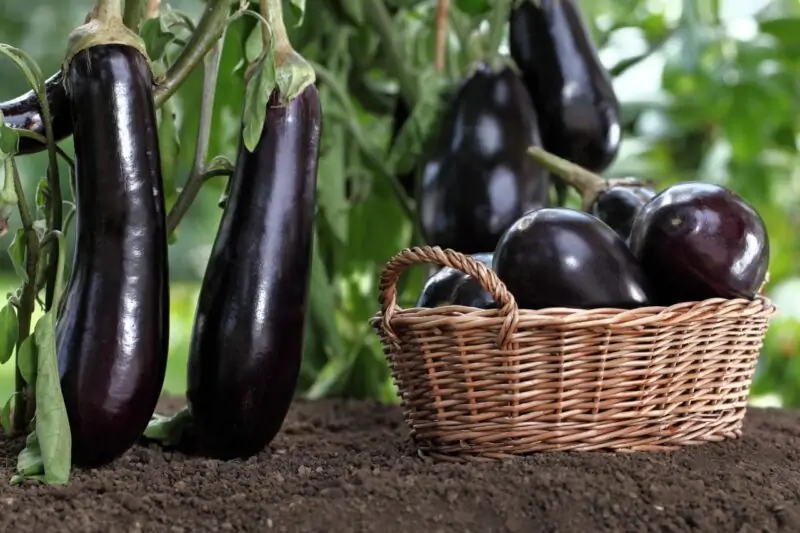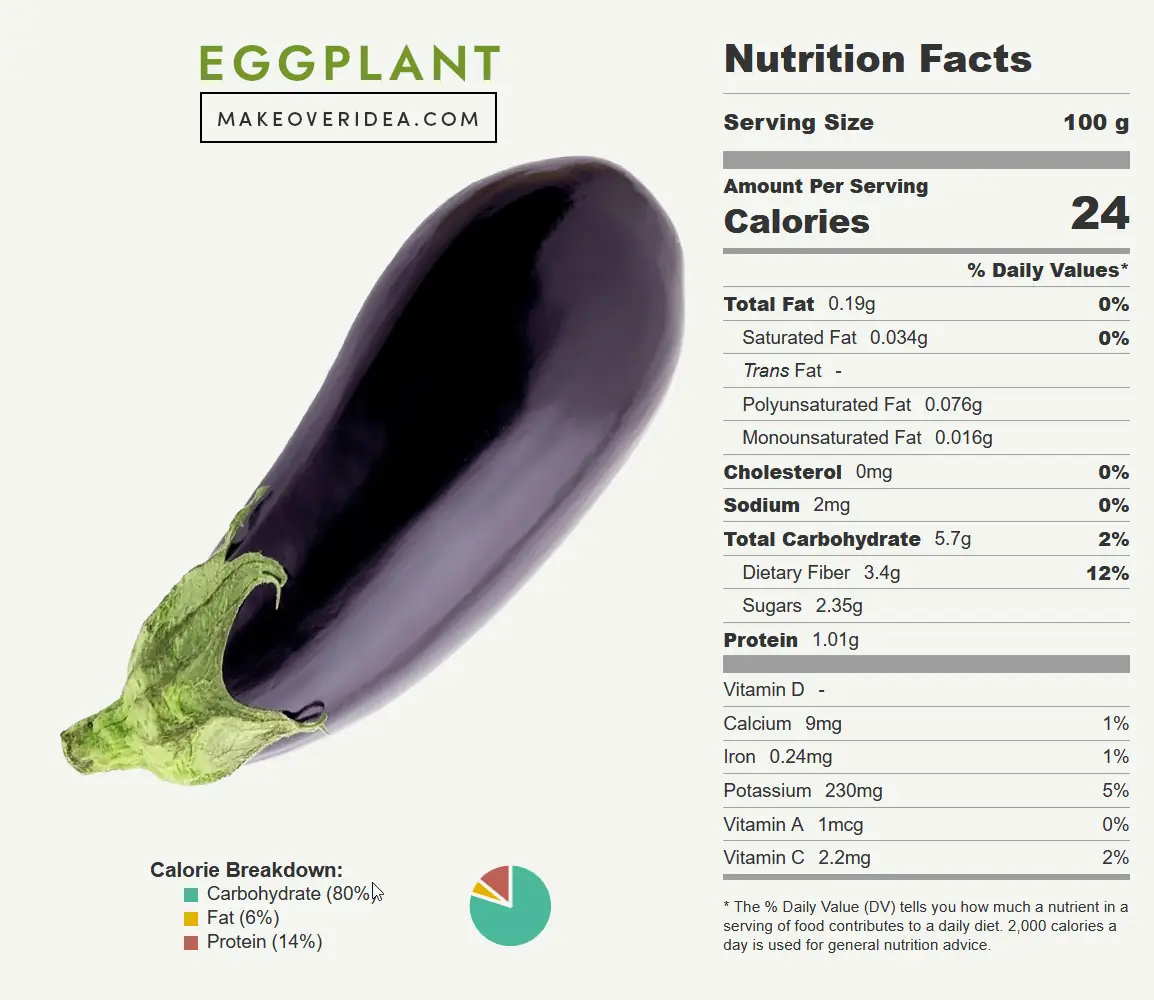Aubergines (Eggplants): Health Benefits and How to Grow, Care, and Cook

Hey there, vegetable lovers! This article is all about aubergines, better known as eggplants in some parts of the world. Here, we’re going to dive into the fascinating history of aubergines, their rich nutritional profile, how they can benefit your health, and much more. If you’re interested in gardening, we’ve got you covered too! We’ll also discuss the lifecycle of this glossy vegetable, how to grow them, and how to store them. So, buckle up and get ready for a comprehensive journey about the wonderful aubergines.
A Comprehensive Overview of Aubergines
The Importance and Richness of Aubergines
Aubergines are a remarkable vegetable. They not only offer a unique flavor and texture but also boast an impressive nutrient profile. The deep purple skin of aubergines is an indication of its richness in antioxidants. They’re a popular ingredient in many dishes worldwide, particularly in Mediterranean and Southeast Asian cuisine. From roasting and baking to grilling and sautéing, aubergines can be cooked in many ways, adding variety and versatility to your meals.
A Quick Dive into the History
Native to Asia, aubergines have a long history, dating back to at least 2008 BC, as per some studies. They were first cultivated in China and have been a part of the traditional cuisines of many different cultures. Despite their rich history, eggplants didn’t make their way to Western countries until much later. Today, they’re loved globally and are a staple in many kitchens around the world.
Aubergine Cultivars: An Array of Varieties
There’s more to aubergines than the common large, deep purple variety. In fact, aubergines come in a range of colors, sizes, and shapes, each with its own unique texture and flavor. Chinese and Japanese aubergines, for instance, are typically long and thin with a glossy, light purple skin. Meanwhile, the ‘graffiti’ or ‘pinstripe’ eggplant is smaller with a striking, streaked purple and white skin. There’s also the white eggplant, which has a softer, spongy texture compared to other varieties.
Nutrient Profile: A Treasure Trove of Health Benefits

Macronutrients
Aubergines are a low-calorie vegetable packed with dietary fiber, which helps in maintaining a healthy digestive system. They contain a small amount of protein and are low in fat. In terms of macronutrients, eggplants contain a good mix of carbohydrates, fiber, and some essential proteins.
Vitamins, Minerals, and Rich Antioxidants
Aubergines are rich in vitamins and minerals, particularly vitamin C, vitamin K, and manganese. They’re also abundant in antioxidants, particularly nasunin, which is found in the skin of the eggplant. Antioxidants help to neutralize harmful free radicals in the body, thus reducing the risk of chronic diseases.
How Aubergines Can Help Reduce Health Risks
There’s growing evidence suggesting that eating eggplants can bring many health benefits, thanks to their nutrient content. High in fiber and low in calories, they can help manage weight and promote a feeling of fullness, which can aid in weight loss. The antioxidants in aubergines can also contribute to heart health, and their potassium content can help regulate blood pressure.
Lifecycle and Growth Conditions: A Complete Reference

Understanding the Aubergine Growth Cycle
Aubergines are warm-season crops that thrive in sunny conditions. The growth cycle begins with planting seeds indoors, around 8 to 10 weeks before the last expected frost. Once the seedlings are ready and the risk of frost has passed, they can be transplanted outdoors. From planting to harvesting, the growth cycle of eggplants can range from 100 to 150 days.
Perfect Soil and Climate Conditions for Aubergines
Aubergines prefer well-drained soil with a pH between 6.0 and 7.0. They need plenty of sunshine, ideally at least six hours a day. As heat-loving plants, they thrive best in temperatures between 70°F and 85°F (21°C to 29°C). Proper care, including regular watering and fertilizing, is crucial for healthy growth.
Planting and Caring for Aubergines
A Step-by-step Guide on How to Plant Aubergines
- Start by planting aubergine seeds in small pots indoors.
- Once the seedlings are big enough and the weather is warm enough, move them outdoors.
- Prepare the soil by adding compost and ensure that the plants are spaced adequately to allow for growth.
- Then, carefully transplant the seedlings into the soil.
Watering and Fertilizing Aubergines: Best Practices
Aubergines need regular watering, especially during dry spells. However, it’s important to avoid waterlogging as this could cause root rot. As for fertilizing, an all-purpose vegetable fertilizer can be applied every 4 to 6 weeks to ensure the plants get the nutrients they need to grow.
Harvesting and Storing Aubergines
When and How to Harvest
You’ll know it’s time to harvest your aubergines when the skin is glossy and the flesh bounces back slightly when lightly pressed. To harvest, simply cut the stem with a sharp knife, leaving a small bit of the stem attached to protect the fruit.
Proper Storage Techniques for Long-lasting Eggplants
Freshly harvested aubergines can be stored in the refrigerator for up to a week. If you have a large crop, you can freeze eggplants. First, slice and blanch them quickly in boiling water, then cool and pack them into freezer bags. They can be stored frozen for up to 8 months.
Common Pests and Diseases of Aubergines: A Helpful Guide

Identifying and Combating Pests in Aubergines
Aubergines can be subject to a variety of common garden pests like aphids, flea beetles, and slugs. Aphids are small insects that gather on the undersides of leaves and can cause discoloration. Flea beetles are tiny black beetles that leave small holes in the leaves. Slugs, meanwhile, can eat both leaves and eggplant fruit. You can control these pests through a combination of methods such as manual removal, using beneficial insects, or applying organic pesticides.
Spotting and Preventing Diseases in Aubergines
Aubergines are also susceptible to diseases like verticillium wilt and powdery mildew. Verticillium wilt causes yellowing and wilting of leaves, while powdery mildew appears as a white powdery coating on leaves. Both diseases can be managed by keeping the plant area clean, ensuring good air circulation around plants, and using disease-resistant cultivars.
From Preparation to Plate: How to Cook Aubergines
Cleaning and Trimming Aubergines for Cooking
Before cooking eggplants, wash them under running water and pat dry. Then, cut off both ends and remove the skin if desired, though it’s usually left on as it contains many of the beneficial antioxidants. If the aubergine is large or has been stored for a while, you may want to slice and salt it to draw out any bitterness.
Cooking Methods that Bring Out the Best in Aubergines
Aubergines are a versatile vegetable that can be prepared in a variety of ways. For a smoky flavor, try grilling them. If you’re looking for something comforting, roasting aubergines brings out a wonderful, rich depth of flavor. They can also be sautéed, stewed, or used in stir-fries. And let’s not forget the famous baba ghanoush, a Mediterranean dip made by baking eggplants and blending with tahini and other ingredients.

Flavor Pairings: What Works Best with Aubergines
Aubergines have a slightly bitter, mildly sweet flavor that pairs well with a wide range of ingredients. They work beautifully with flavors like garlic, tomatoes, and olive oil, and are often used in Mediterranean and Asian dishes. For an aromatic twist, herbs like basil, thyme, and rosemary complement the flavor of eggplants wonderfully.
Popular Aubergine Dishes: Worldwide Favorites
Whether it’s the Italian Eggplant Parmesan, the French Ratatouille, or the Middle Eastern Baba Ghanoush, aubergines are an integral part of many delicious recipes around the globe. In Asia, they’re often stir-fried, grilled, or used in curries. The rich, soft texture they acquire when cooked make them a beloved ingredient in many vegetarian and vegan dishes, too.
FAQs
When buying aubergines, look for ones that are firm and heavy for their size with smooth, glossy skin. Avoid those with brown spots, bruises, or discoloration. The stem and cap should be bright green.
Absolutely! Aubergines are low in carbs and high in fiber, making them suitable for the Keto diet. They’re also naturally vegan and gluten-free, so they can be included in a wide variety of diet plans.
With the right care, you can grow aubergines at home, even if you don’t have a large garden. Start by planting seeds indoors and move the plants outside when the weather warms up. They need well-drained soil, lots of sunshine, and regular watering and fertilizing.
The best way to cook eggplants depends on personal preference. They can be grilled, roasted, sautéed, or used in a variety of dishes. Remember, before cooking, wash and trim the aubergines and remove the skin if desired.
Conclusion
This comprehensive guide has given you a deep dive into the world of aubergines, from their history and varieties to their growth cycle and care requirements. We’ve also explored the rich nutrient profile of eggplants and how they can contribute to a healthy diet. Plus, we’ve shared some handy tips on how to prepare and cook this versatile vegetable. Whether you’re planning to grow your own aubergines or cook with them more often, this guide has you covered from seed to plate. Enjoy exploring the rich, unique world of aubergines!